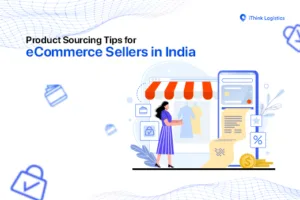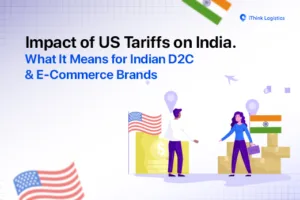Introduction
Ever opened a package only to find the product damaged or broken?
For online shoppers, this is more common than you’d think. And for eCommerce sellers like you, it can lead to costly returns and lost trust all of it because you did not research on which type of packaging to take, carboard vs corrugated?
One of the most overlooked reasons behind such delivery failures is poor packaging—specifically, choosing the wrong type of box.
Most D2C businesses rely on cardboard or corrugated boxes for shipping. But they’re not the same.
While cardboard is lightweight and affordable, it’s not built to handle rough shipping conditions. Corrugated boxes, on the other hand, are designed for durability and protection.
Let’s break down the key differences between cardboard and corrugated packaging so you can choose the right one for your needs.
Why the Right Packaging Material Matters
Packaging isn’t just about good looks. It’s your product’s first line of defense in transit—and a major factor in customer satisfaction.
Almost 20–30% of e-commerce orders are returned, compared to only 8.89% in offline retail. And around one-fourth of these returns happen because products arrive damaged.
Customers don’t care whether the damage occurred in your warehouse or during delivery. According to a survey, 41% of customers blame the seller for any shipping damage. That means your brand takes the hit, even if the problem wasn’t directly your fault.
Clearly, choosing the right packaging material is essential not just for product safety, but also for your reputation and repeat sales.
What is Cardboard: Definition and Characteristics?
Cardboard is a thicker paper made of recycled pulp and fibre. It’s mainly useful in packaging, display, and crafts. You must have seen cardboard in cereal boxes or shoe boxes, etc.
The popularity of cardboard is due to its lightweight nature, as it doesn’t add weight to the shipping parcel. More so, it protects the goods being transported. It is cost-effective and environment-friendly as well.
Another distinct characteristic of cardboard is that it can be easily laminated and printed to enhance the unboxing experience for your customers.
Also Read: Types of Packaging Materials for Export and Their Benefits
Common Uses of Cardboard Boxes
- Retail Packaging: Often used for packaging food, cosmetics, and small electronic items.
- Storage: Ideal for short-term storage but not durable for long-term heavy-duty use.
- DIY and Crafts: Great for creative projects and DIY models.
Packing Cardboard vs. Cardboard Cartons
Packing Cardboard vs. Cardboard Cartons: What’s the Difference?
If you thought packing cardboard and cardboard cartons are not that different. You have been misled. Understanding the distinction is key to making the right e-commerce packaging choice for your products.
1. Packing Cardboard:
Packing cardboard typically refers to thin, lightweight sheets of cardboard used as a protective or supporting layer in packaging. It’s not a box on its own—it’s usually used inside a box or wrapped around products.
Think of packing cardboard like a buffer—it adds a layer of protection between fragile items or fills gaps inside a box to prevent movement. It’s great for cost-effective, low-risk packaging, especially when the products aren’t too fragile or heavy.
Best used for:
- Wrapping books, clothes, or accessories
- Padding within larger boxes
- Separating stacked items
2. Cardboard Cartons:
Cardboard cartons, on the other hand, are box-shaped containers made entirely from cardboard. These are the typical shoebox-style boxes you see for storing or shipping goods. They can be printed, laminated, and branded—making them a popular choice for retail packaging.
However, since they’re made from single-layer cardboard, they lack the durability and strength required for shipping heavy or fragile items. They’re better suited for lightweight products that don’t face rough handling during transit.
Best used for:
- Product display packaging
- Storing light, non-breakable items
- Short-distance shipping
Quick Summary:
| Attribute | Packing Cardboard | Cardboard Cartons |
| Form | Flat sheets | Box-shaped |
| Primary Use | Padding, wrapping | Storage, display |
| Strength | Low | Moderate |
| Ideal For | Adding inner protection | Lightweight shipping & retail packaging |
What is a Corrugated Board?
Corrugated boards are not just thick cardboard boards—they’re built differently.
A corrugated box is formed by combining at least three layers of cardboard, just like a sandwich. The outside layers are flat and smooth. But the inside layers are wavy, forming peaks and valleys that make all the difference.
The grooves or waves of the internal layers provide cushioning. This internal layering makes the corrugated boards more resistant to shock, moisture, or breakage.
Corrugated board can be of 3 types –
- Single-wall board that contains one layer of corrugated material, making it stronger than ordinary cardboard. Suitable for lightweight products and short transit.
- The double-wall board is made up of 2 layers of corrugated material. It results in better protection for heavy-weight products without being too costly.
- The triple-wall board is made up of 3 layers of corrugated material. It’s the strongest and the most expensive of all three types.
Also Read: Global Shipping: Best Practices for Packaging and Labelling
What are Corrugated Carton Boxes?
Cubic structures made of corrugated material are Corrugated carton boxes. They have a higher strength-to-weight ratio, meaning they are generally stronger and can support more weight than their own weight.
Difference Between Corrugated Paper Box and Regular Cardboard
The core construction of a corrugated paper box and regular cardboard remains the same.
Corrugated boxes are stronger than regular paper boxes because of their unique multi-layer structure. They’re made with a fluted (wavy) inner layer sandwiched between two flat outer layers.
This design creates air pockets that absorb shock, resist compression, and distribute weight evenly. Regular cardboard is just a single flat sheet with no internal support.
That’s why corrugated boxes can handle rough shipping, stacking, and heavier loads much better than standard paperboard boxes.

Benefits of Corrugated Packaging Boxes
- Durability: Withstands heavy loads and rough handling.
- Eco-Friendly: 100% recyclable and reusable.
- Customizable: Can be tailored to specific dimensions and branding needs.
- Pocket-friendly: More affordable and easy to source for bulk shipping.
Difference between Cardboard vs. Corrugated boxes
If you only understand the definition and characteristics of different boards, it isn’t enough to pick the right packaging material for your orders.
- Structural Differences
Regular cardboard is a single, flat sheet of thick paperboard. It’s similar to what you find in cereal boxes or the packaging for toothpaste.
A corrugated box is an upgrade on a cardboard box. Corrugated material is a result of different cardboard layers stacked on top of each other.
- The outer layers provide a robust and flat surface, providing crush resistance.
- The inside arches distribute weight evenly, preventing bending or deformation.
- Durability and Strength
The durability and strength are direct results of the structuring of the material.
A single-sheet cardboard box lacks durability and strength.
The corrugated internal layers can have closer or distant arches, making the board suited for different uses. The compression-resistance, puncture-proof, or foldable qualities of the material depend on the number and distance of flutes.
- Shock Absorption
Cardboard boxes can be easily torn and broken as they are single-layered material.
Corrugated materials can withstand stress, bad weather, and rough handling because they were built to be sturdy.
- Weight and Cost Efficiency
Cardboard boxes come cheaper and are more lightweight. So they don’t add up to the shipping costs. If you only need to ship lightweight material on a limited budget, pick cardboard.
If you need to ship heavy-duty products, corrugated boxes are a go-to choice.
- Practical Applications
If you need to ship fragile or products prone to spillage, you must pick corrugated boxes.
For example, 32-38 arches or flutes per foot make the corrugated material suited for cushioning fragile items.
The corrugated material with 36-41 flutes per foot makes it ideal for shipping boxes.

Buying Cardboard Boxes Online vs. Corrugated Boxes
Where to Find Cardboard Boxes Online
Several online shipping and packaging companies sell cardboard boxes. But, your problem doesn’t end with buying cardboard boxes alone.
Rather than just purchasing packaging, why not streamline your entire fulfillment process? iThink Logistics ensures secure packaging, efficient shipping, and reduced return rates.
Because at the end of the day, you need to sell your products and get paid. Not to forget, also make your customers happy.
A smarter move for D2C e-commerce sellers like you will be to outsource your packaging and shipping to a reliable 3PL logistical arm. They can take care of their specialization, while you’re free to focus on your business.
Selecting the Right Type for Your Packaging Needs
The selection of ideal packaging material for your products depends on various factors. Answer these questions to determine whether you should pick cardboard or corrugated material.

- Dimensions
What are the product’s weight, size, and shape? Unusual shapes will need a foldable material.
- Material Interaction
Can the product impact the packaging? For instance, can it puncture the packaging with sharp edges or make it soggy due to moisture?
- Mode of Transit
What is the duration and mode of transportation? Longer duration and rough transit need more robust packaging.
- Cost Consideration
What is the cost of the packaging material? Cardboard boxes are cheaper than corrugated ones.
- Branding Needs
Do you need any special branding? How easy is it to print or laminate on the given surface?
Cardboard supports easy lamination and printing.
Cardboard vs. Corrugated Boxes: What to choose?
Choosing between cardboard and corrugated boxes depends on your packaging needs. If you prioritize durability, protection, and sustainability, corrugated boxes are the way to go.
On the other hand, if cost and lightweight packaging are your primary concerns, cardboard may work best.
But guess what? You can talk to our experts about all your shipping and packaging problems. They are only a call away.












